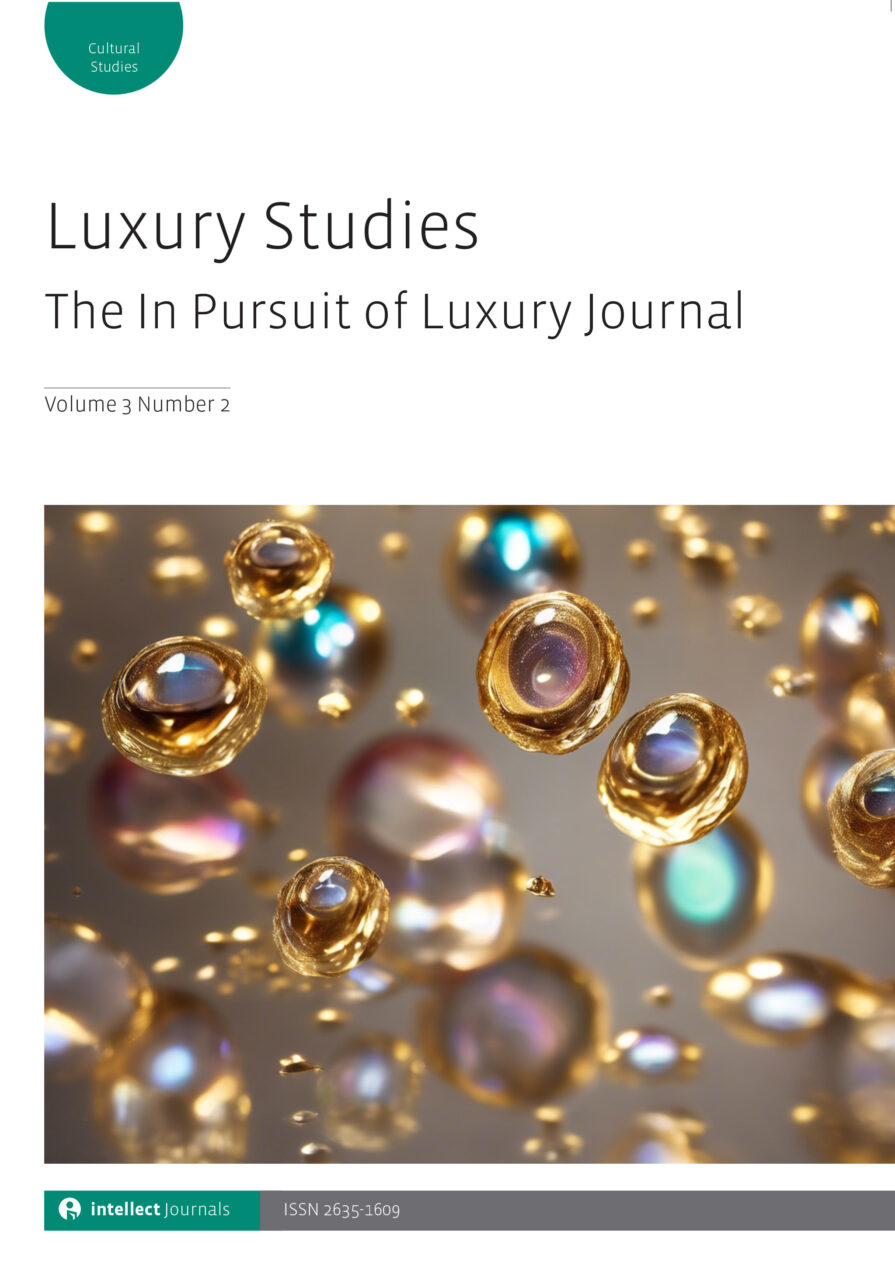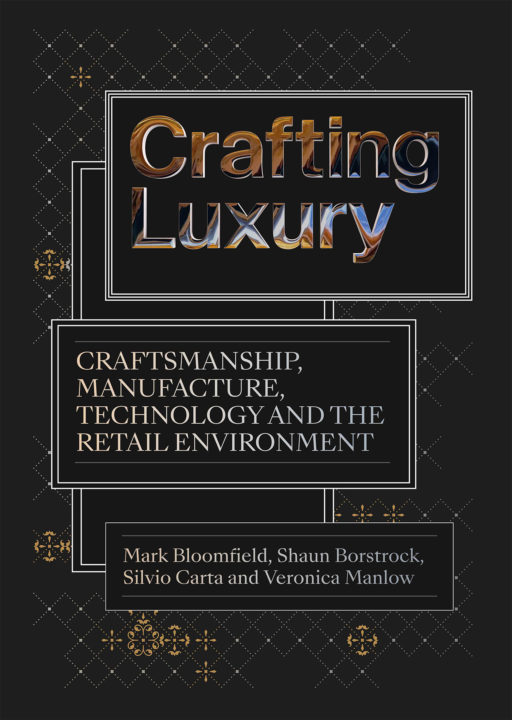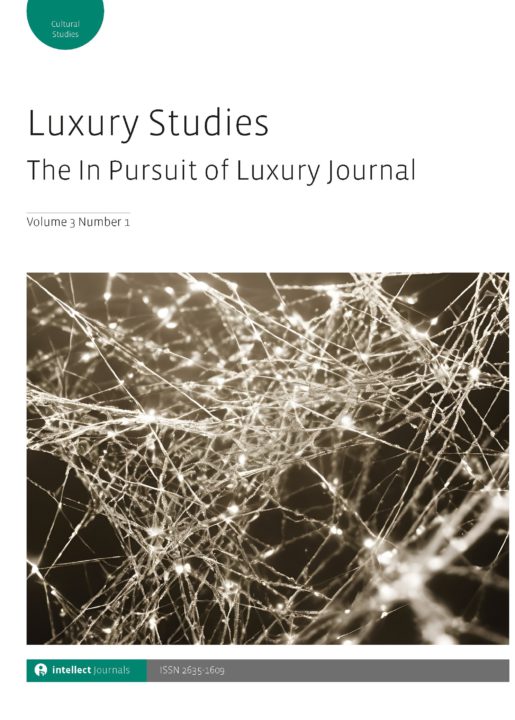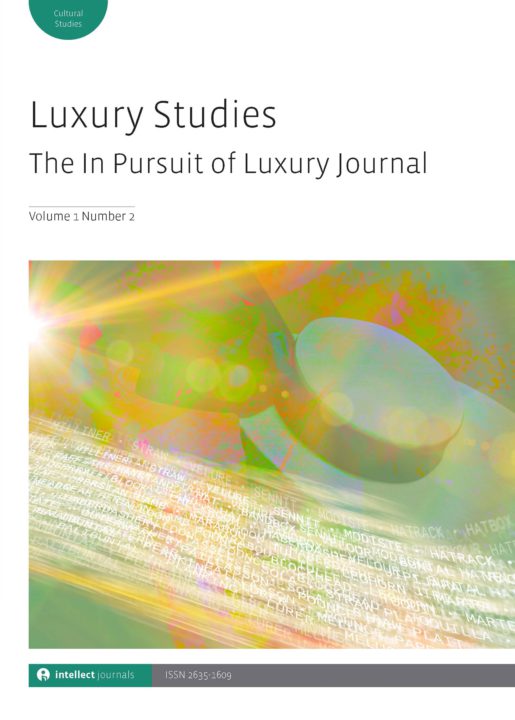Modern luxury – that which (as Monneyron notes herein) originated in the Versailles court of the Sun King, Louis XIV – is image-based. It cannot exist nor establish its exclusivity without being visualized and, per Veblen’s description of how capitalist consumer culture operates, must be ‘conspicuously consumed’ to have social meaning, i.e. that of class identity and status (Veblen [1899] 1994). In short, luxury has arguably always been performative and the display of luxury goods and one’s perceivable consumption of those goods are key aspects of its meaning making.
But how do performances of luxury operate in our increasingly virtual and ephemeral world of digitized signifiers, particularly those that bespeak class, identity, finance, wealth? One cannot walk up to baccarat tables in Monaco and flash the croupier a wad of bitcoin. A large screen in the home can display an NFT artwork but what happens when a cable shakes loose or the pixels on the screen burn out? Worse, yet, what happens if the passcodes, seed phrases or blockchain are forgotten, corrupted or lost or infinite copies are made and distributed? What happens when, per Solca, the demand for luxury declines as its cost increases and a ‘volume business’ in tangible and intangible luxury goods chips away at exclusivity and compromises quality?
It is not surprising that as the world has become more digitized the linguistic phrase ‘a thing’ has grown in popular usage. Google’s Ngram Viewer (itself created from the digitization of 5.2 million books and the indexing of over 500 billion words [Michel et al. 2011]) shows a steep uptick in the use of the phrase ‘a thing’ in the first 22 years of the twenty-first century – a time corresponding to the digitization of traditional creative and cultural output and, via social media, individual identity and self-presentation. Other peaks of high usage occur on the cusp of the Gilded Age (1889), the American Civil War (1863) and before that, several years of the first industrial revolution (late 1700s), all periods in which human workers became ‘thingified’ as they laboured on the mass production of widgets (Google Books Ngram Viewer 2025). Is this our human attempt to solidify and give presence and meaning to concepts or products in a world that feels increasingly ephemeral? Walter Benjamin’s The Work of Art in the Age of Mechanical Production (1969) posited that when mechanically reproduced, as via photography or film, and removed from the direct embodied encounter with a human, the power and effect of a work of art (its ‘aura’) was substantially diluted if not completely lost. It is not a stretch, I would argue, to apply this loss of aura to our age of ubiquitous digitization of artefacts previously physically observable as markers of wealth, exclusiveness, luxury (i.e. wallets, original art, physical workplaces, office furnishings, home décor, the accoutrements of personal adornment). Is this renewed articulation of ‘thing-ness’ our species’ effort to make tangible and metaphorically possessable that which we want to display or signal? Is this our way of grappling with a loss of the embodied luxury object and an attempt to reify the concept of exclusive possession that is so key to the experience and value of luxury? Or, lacking the ability to ‘thingify’ luxury beyond a linguistic turn of phrase, are we increasingly turning to experience as a site of luxury consumption and creation?
Performance turns on the transaction between performer and audience. The possession of cultural capital and class in this transaction is malleable and context based. Performers at the courts of Elizabeth I or Louis XIV were perceived as uniquely talented and accomplished yet they also clearly held a class position distinctively apart from and subservient to those in their audience – the courtiers, privy counsellors, servants, etc. (whose attachment to the royal court bespoke their status). Modern celebrity culture changed this transaction, elevating the performer, particularly the famous performer, to the position of power. The resulting effect is that the experience of a performance by this person itself becomes ‘a thing’. This introduces time- and space-bias into luxury – the urgency and exclusiveness of seeing the revival of a particular musical before a stunt-cast celebrity leaves – the consumption of scarce experiences for which a premium may be charged separate from that of access to a recording or digital artefact.
Christopher Berry states that ‘[n]o society operates without employing the grammar of the necessary and non-necessary or luxury’ (125 in this issue). How luxury is defined and expressed via this grammar changes over time as does access to this language and these spaces. We see this in the reification of human creativity present in luxury ‘goods’ constituted of participatory environments and events. It is not the parity item of food, but the experience of ‘foodstuff’ created and transformed by Bompas and presented in the immersive performance of the branded space that is the luxury experience. The obsolete television studio that Ron Doud transformed into Studio 54 became an immersive festival of conspicuous consumption – of drugs, fame and glamour in the stylized excess that was the disco era. This exclusive experience could be accessed by anyone able to pecuniarily emulate those ‘to the disco born’ through fame and wealth, allowing them access to the luxury space that celebrated dance ritual to commercialized pop music beyond the velvet ropes. This was a site of empowerment, per Serdari – one that supported and facilitated the human right to ‘participate in luxury’.
Serdari’s reflections on the intellectual challenges of strong luxury experiences and strong luxury brands can be observed in the blending of high and low culture genres and cultural texts that inhere in Free Your Mind, the 2023 live dance adaptation of The Matrix movie trilogy. Whitby suggests that this reification of popular culture texts into high culture live performance creates a new site of luxury consumption whose engine is the observed artisanal labour of the professional dancers and choreographers who have adapted and perform this version of the blockbuster film franchise of the 1990s. This type of work has its own legacy and is perhaps the progeny of Ivo van Hove’s 2018 stage adaptation of Visconti’s 1969 film The Damned (Brantley 2018), which integrated live performance with live multicam and pre-recorded video (often indistinguishable from the live feed until one was ‘surprised’ by a shift in action one was seeing ‘IRL’ onstage) to reenvision the original cinematic text via the visible labour of the performers and crew of the Comedie-Francaise. 1
The contents of this issue of Luxury Studies: The In Pursuit of Luxury Journal (IPOL) raise thought-provoking ideas about the relationships between performance and luxury and in so doing invoke and critique Benjamin and Veblen. The exclusivity of Benjamin’s aura is championed yet transformed by an increasingly digitized and experience-based luxury market. Veblen’s conspicuous consumption and pecuniary emulation are threatened by tax codes driven by sumptuary ethics. The traditional luxury economy finds itself continuing to innovate and respond to internal and external forces. Particularly resonant for me is Berry’s conclusion: ‘luxury is always societally relative and an integral part of any society’s self-understanding’ (125 in this issue). How, as our national and global economies transform in a new political age, will luxury aid us in understanding society and our personal and communal identities (and vice versa)?
Specific to the contents of this issue: does the creation of exclusive luxury performances transform the professional artists, dancers, choreographers, actors who create the experience into ‘artisans’? What are the implications of that for their professional identities within their cultural industries? How do we reclaim and honour the contributions of designers such as Ron Doud and other luxury creators whose lives were cut short by the AIDS epidemic? That period perhaps more than others maps starkly onto Monneyron’s conception of luxury (per Durand) as ‘grounded on the anguish of death’ (140 in this issue). Doud’s creation of luxury images and spaces was his ‘compensation of the anguish of death’ (140 in this issue) and as Bradbury’s rigorous research details – produced work that influenced and resonated through the design aesthetic of decades Doud did not live to see.
Expanding beyond these contributions to the yet unknown: Will NFTs and other digital goods need to create more visible or experiential performances of their existence to remain an attractive luxury good? How does crypto ownership manifest itself in a way akin to the performance value of ‘cash?’ Will backlashes to heightened income inequality reform and reconfigure how luxury is performed to and by certain consumer segments? The contributors here equip us to embark upon these considerations.
Featuring the following articles:
Luxury: Consumption, legislation, regulation: Part II: Regulation
Christopher J. Berry
Luxury Goods: The value for money question
Luca Solca
Reflecting on the work of Sam Bompas and its connection to luxury
Thomai Serdari
Frederic Monneyron on luxury
Frederic Monneyron
Monographic study: Ron Doud and the luxury boutique of the 1970s
Oliver Bradbury
Book review by Veronica Manlow: Bring No Clothes: Bloomsbury and the Philosophy of Fashion, Charlie Porter (2024)





